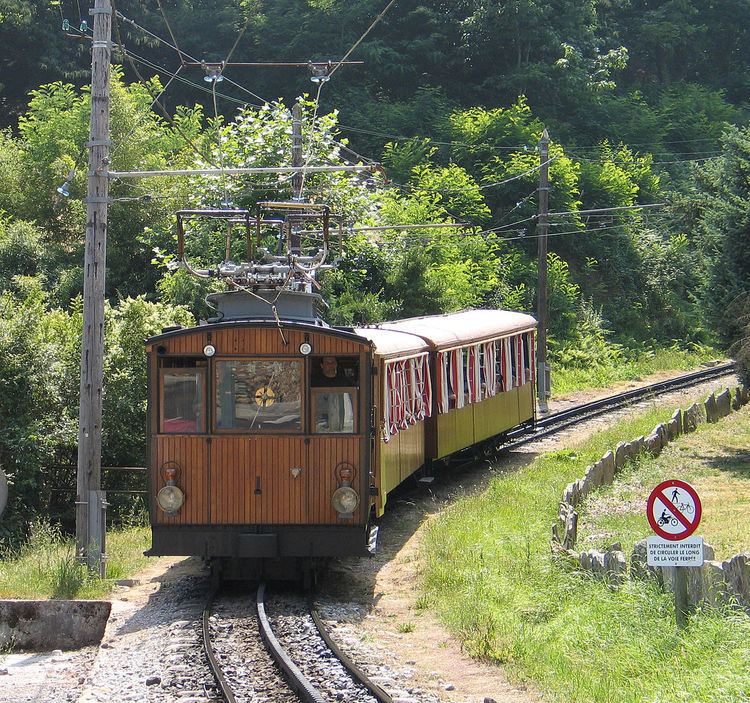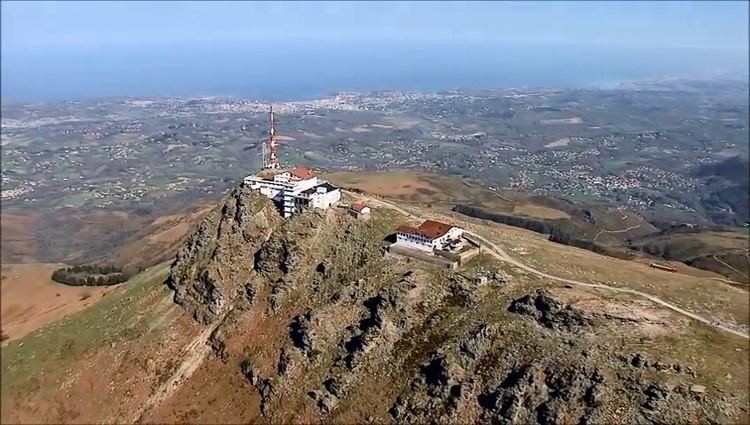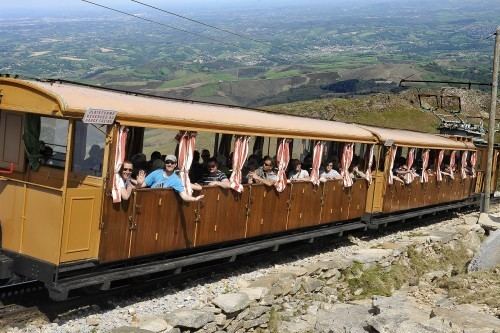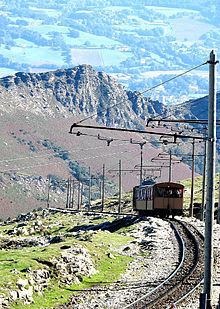Line length 4.2 km (2.6 mi) Highest elevation 905 m (2,969 ft) | Operating speed | |
 | ||
Track gauge 1,000 mm (3 ft 3 ⁄8 in) Similar Larrun, Cuevas de Sare, Musée du Gâteau Basque, Ortillopitz, Ibardin | ||
Le petit train de la rhune une machine bien huil e
The Petit train de la Rhune is a metre gauge rack railway in France at the western end of the Pyrenees. It links the Col de Saint-Ignace, some 10 km (6.2 mi) to the east of Saint-Jean-de-Luz, to the summit of the La Rhune mountain. Although this summit lies on the border between France and Spain, the railway lies entirely within the French département of Pyrénées-Atlantiques.
Contents
- Le petit train de la rhune une machine bien huil e
- Le petit train de la rhune wmv
- History
- Technical details
- References
Le petit train de la rhune wmv
History

The idea of building a railway to the summit of La Rhune was first proposed in 1908, and a law passed in 1912 entrusted the construction and operation to the département. Work started on the construction of the line in 1912, but was suspended during World War I. The line opened on June 30, 1924. In a referendum in 1978, the population of the nearby village of Sare rejected a proposal to build a road to the summit of the Rhune, thus enabling the railway to survive.

The concession to build the line, and operate it until 1982, was granted by the département to the Société Anonyme des Chemins de Fer Basques, which changed its name to the Voies Ferrées Départementales du Midi in 1914. The original concession was extended until 1994 and, as a result of a merger, it was taken over by the Société Hydroélectrique du Midi in 1989.

In 1994, the concession expired and operation of the line reverted to the département. From 1995 until 2012 the line was operated under contract by CFTA, a subsidiary of Veolia Transport, a large international transport services business that also operates several other tourist railways in France. In 2012 Établissement public des stations d’altitude (EPSA) stepped in as operator.
Technical details
The line has the following technical characteristics:
Trains consist of a four-wheeled electric locomotive that pushes two coaches up the mountain, and leads them down. Each coach is carried by a four-wheeled bogie at its upper end, and a single two-wheeled axle at its lower end. With six ten-seat compartments in each coach, each train carries 120 passengers.
The line operates from mid-March until early-November, with trains every 35 minutes.
The line is one of four lines in the world still using three-phase electric power.
